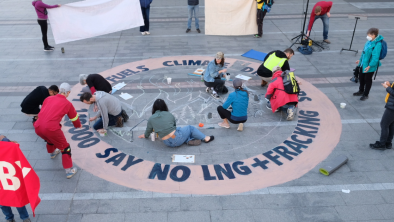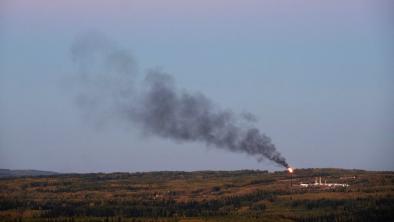Don't sacrifice Bute Inlet for the sake of a hydro project
Vancouver Sun
I spent 20 years as a logger, and over those years I worked in almost all the major inlets on the British
Columbia coast - Toba, Knight, Rivers, Jarvis, Kingcome and many others. Each and every one was
beautiful, with great scenery and good fishing.
The loveliest of all the inlets, though, was Bute. From vast icefields spanning the peaks, to jagged,
rugged spires piercing the clouds, waterfalls cascading into the lush forest, to the narrow valley floor of
the Homathko Valley, with the strikingly coloured river meandering through it, there is no shortage of
delights for the eye.
I first arrived there on a spring day, by air, to the camp at Scar Creek. I expected to work until fire
season shut down, and move on. I stayed for five years. Though the view was spectacular, I think it
was the fishing that hooked me. That and regularly seeing grizzly bears, the ubiquitous black bear in
huge numbers, and mountain goats close up on the slopes just above where we were logging.
Come fall, the river and its tributaries were full of salmon fulfilling their destiny, the banks thick with both
types of bears gorging themselves for the winter to come. Ravens and eagles fought for scraps, wolfs
sneaked in for a fish whenever possible. For a nature lover such as myself, this was paradise.
Like other fabled paradises, Bute comes with a price. Bute, and its two valleys, the Southgate and the
Homathko, are some of the most rugged terrain on the coast. The Homathko is not really meant for
man, and treats our works with contempt. Roads vanish in an instant as mud, boulders or snow
plummet down the steep mountain slopes.
From out of nowhere, with no warning, a gust of wind roars down the valley, blowing trees down, and
men off their feet. If it is summer, it is like being in front of the door of a blast furnace. In late fall, the
wind chill from these blasts makes a January day in the Arctic seem balmy. Fortunately, these were
usually short-lived events, though extremely violent. I have no hard numbers for the wind speed of
these "puffers," as we called them, though my best guess would be in excess is 120 km/h.
Then there is winter. A few hardy souls over-winter at the head of the inlet, but up at Scar Creek camp,
no one does. I doubt anyone could. Most ski resorts can only dream of snowpacks such as fall there. A
normal building would collapse under 15 metres of snow. At the head of the inlet, the snow is often just
in the 10-metre range.
Spring was the start of our year, sometimes as early as March, or as late as May. Each spring, it was
a guessing game as to where the river would be.
The next Sunday, we went fishing. There was no point to it, the freshet was underway, the creeks and
river far too turbid and fast for successful fishing, but just standing on the banks of Scar Creek and
seeing Volkswagen-sized boulders tumble down the creek was worth it.
Now, Plutonic Power, U.S. giant General Electric and the Campbell Liberals want to try to tame the
Bute for run-of-the-river hydro projects, allegedly with little environmental impact.
The engineering infrastructure to get equipment and materials to the tributaries planned for generator
sites needs to be massive, just to survive. As for the channels, what sort of structure can survive
repeated bashing by car-sized boulders?
I won't get into the problems with running power lines through there. BC Hydro considered it years ago,
and decided it was a bad idea. They know more about that sort of thing than I do.
For trashing one of the most spectacular valleys in B.C., what do we get? A source of power that
cannot operate in winter, when B.C. needs power the most.
My most vivid memory from my years up there was a day in early December, the longest we had ever
been in camp, logging right alongside the Homathko River. Just behind the yarder was a tiny creek, full
of late spawning salmon. My rare few idle minutes were spent watching this natural wonder. At one
time, I looked upstream, and not 50 feet away was a mountain goat, having a drink. Looking
downstream of the Homathko, a couple of hundred yards away, was a large grizzly and her cub, fishing
for all they were worth.
I may be a sentimental old man, but I sure would like to take my granddaughters up there to see that for
themselves.
Lorne Gottschewski is a retired logger.
© Copyright (c) The Vancouver Sun


